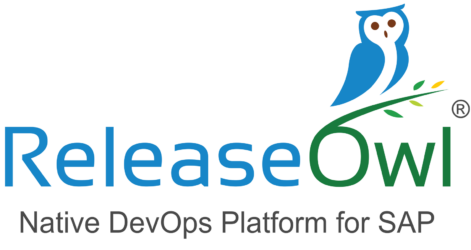SAP Low Code Automation
Filter By
Browse By
- SAP Analytics and AI
- SAP Application Development and Integration
- All SAP Application Development and Integration
- SAP ABAP
- SAP ABAP Development Tools
- SAP ABAP Test Cockpit
- SAP API Management
- SAP BAPI
- SAP Basis
- SAP BRF
- SAP Business Application Studio
- SAP CMS
- SAP Design Studio
- SAP Development Tools
- SAP DevOps
- SAP EAI
- SAP EDI
- SAP Extension Suite
- SAP Fiori
- SAP Fiori Elements
- SAP Integration Suite
- SAP Low Code Application Development
- SAP Low Code Automation
- SAP Netweaver
- SAP Release Management
- SAP UI5
- SAP Web Application Server
- SAP Web IDE
- SAP Business Process Management
- SAP Center of Excellence
- SAP CIO
- SAP Customer Experience
- SAP Data and Data Management
- All SAP Data and Data Management
- SAP BW
- SAP BW/4HANA
- SAP Crystal Reports
- SAP Data Archiving
- SAP Data Center
- SAP Data Governance
- SAP Data Integration
- SAP Data Migration
- SAP Data Quality
- SAP Data Services
- SAP Data Strategy
- SAP Data Visualization
- SAP Data Warehouse Cloud
- SAP DMS
- SAP Document Control
- SAP EIM
- SAP ETL
- SAP ETL Tools
- SAP HANA
- SAP HANA Administration
- SAP HANA Deployment Infrastructure
- SAP HANA Studio
- SAP Master Data
- SAP Master Data Governance
- SAP MDM
- SAP Enterprise Architect
- SAP Enterprise Asset Management
- SAP ERP
- SAP Finance
- All SAP Finance
- SAP Accounting
- SAP AR AP
- SAP Asset Accounting
- SAP Billing Systems
- SAP BPC
- SAP BRIM
- SAP Cash Management
- SAP Central Finance
- SAP Controlling
- SAP COPA
- SAP Cost Center Accounting
- SAP Currency Risk
- SAP e-invoicing
- SAP FICO
- SAP Finance Automation
- SAP Advanced Financial Closing
- SAP Financial Consolidation
- SAP Financial Planning
- SAP FX Risk
- SAP General Ledger
- SAP Global Tax Management
- SAP Hyperion
- SAP Order to Cash
- SAP Payment Processing
- SAP Profitability Analysis
- SAP Rebate Management
- SAP S/4HANA Finance
- SAP SWIFT Compliance
- SAP Treasury Management
- SAP Universal Journal
- SAP Governance Risk and Compliance
- SAP Human Capital Management
- SAP Intelligent Technologies
- SAP Platform and Technology
- All SAP Platform and Technology
- SAP Business Technology Platform
- SAP Cloud
- SAP Cloud Connector
- SAP Cloud Integration Platform
- SAP Cloud Migration
- SAP Cloud Platform
- SAP Cloud Providers
- SAP Cloud Strategy
- SAP Digital Signature
- SAP Container Platform
- SAP HANA Enterprise Cloud
- SAP Digital Asset Management
- SAP Smart Forms
- SAP HEC
- SAP Digital Integration Hub
- SAP Hyperscalers
- SAP Infrastructure
- SAP Messaging
- SAP Quality and Testing
- SAP Security
- SAP Spend Management
- SAP Supply Chain Management
- All SAP Supply Chain Management
- SAP APO
- SAP Asset Management
- SAP Business Network
- SAP Digital Manufacturing Cloud
- SAP Digital Twin
- SAP EWM
- SAP IBP
- SAP Inventory Management
- SAP Label Printing
- SAP Logistics
- SAP Manufacturing
- SAP Manufacturing Automation
- SAP MES
- SAP MII
- SAP MM
- SAP MRO
- SAP MRP
- SAP Order Management
- SAP Plant Maintenance
- SAP PLM
- SAP Production Planning
- SAP S&OP
- SAP SD
- SAP SPM
- SAP Supply Chain Planning
- SAP Track and Trace
- SAP Transportation Management
- SAP System Administration
Low Code Platforms Enable Easier Automation for IT and Business Workflows
Process automation across both IT and business workflows are the next wave of digital transformation. Companies are looking for speed, agility and cost savings by identifying use cases to automate.
Low code platforms enable easier process automation through visual tools and abstraction of complex logic such as robotic process automation (RPA), artificial intelligence (AI), machine learning (ML) built into bots, voice, mobile, internet of things (IoT), etc.
Almost half of the respondents in SAPInsider research on Application Strategies and Development for SAP S/4HANA and Cloud are planning or evaluating low-code platforms. There is an expectation of significant impact from these platforms such as ability to deliver applications rapidly, reduced IT costs, and enabling industry standards. Almost half of the respondents in the survey expect reduction in IT costs and 45% want to deliver rapid applications using low-code/no-code platforms.
Low Code Platforms Enable Easier Automation for IT and Business Workflows
Process automation across both IT and business workflows are the next wave of digital transformation. Companies are looking for speed, agility and cost savings by identifying use cases to automate.
Low code platforms enable easier process automation through visual tools and abstraction of complex logic such as robotic process automation (RPA), artificial intelligence (AI), machine learning (ML) built into bots, voice, mobile, internet of things (IoT), etc.
Almost half of the respondents in SAPInsider research on Application Strategies and Development for SAP S/4HANA and Cloud are planning or evaluating low-code platforms. There is an expectation of significant impact from these platforms such as ability to deliver applications rapidly, reduced IT costs, and enabling industry standards. Almost half of the respondents in the survey expect reduction in IT costs and 45% want to deliver rapid applications using low-code/no-code platforms.
Use cases for Low code Automation
Low code platforms enable rapid delivery of applications by providing visual approaches such as drag-and-drop that involve minimal coding. A more user-friendly and packaged approach enables programmers to deliver applications faster. However, low code also promises to put the ability to create at least basic applications at the hands of even non-technical business users.
Companies are starting to use low-code automation for areas such as:
- Legacy integration: low code objects can compensate for lack of programming knowledge in legacy languages or understanding of legacy application programming interfaces (APIs)
- Data migration: low code programs can migrate data, check for exceptions and provide reports to tackle them, thus reducing time, costs and risks
- Omni-channel experience: low code programs can be customized for different channels while ensuring a unified experience
- Reporting processes: low code programs can generate reports and flag exceptions in both IT and business processes for proactive interventions
Components of Low Code Automation
A typical low-code development platform comprises the following components:
- Visual Integrated Development Environment to define application logic and data models
- Integrations to SAP and non-SAP applications or data sources to manage access, modifications or storage of data
- Application Life Cycle Manager to build, deploy, and manage applications for testing, staging and production environments
While low code holds promise, there are challenges cited by SAP customers in the above-mentioned survey such as security (45%), governance (34%), and migration satisfaction (34%). Read article “Governance for Low-code Platforms” on recommendations on governance for low code platforms.
SAP is investing in its own platform to provide strong low code capabilities to its customers. Several other vendors are innovating with special functionality, sometimes for specific industries.
1303 results
-

 Premium
Premium
Configure a Customer-Specific Transaction Type for Problem Management in SAP Solution Manager 7.1
Reading time: 11 mins
ManagerSAP Solution Manager 7.1 IT Service Management has a new transaction type, SMPR, for configuring the Problem Management process to find out the real cause of incidents occurring due to the same problem. Problem messages assist in quick, easy ticket resolution during support. You can create a customer-specific transaction type for Problem Management via a...…
-

 Premium
Premium
SAP NetWeaver Business Rules Management: Externalize Critical Business Logic for Enhanced Flexibility
Reading time: 19 mins
Discover how the Rete engine in SAP NetWeaver Business Rules Management helps you define business logic — without the need for IT assistance. As this logic is encapsulated and handled in a dedicated environment, business experts can adapt rules during runtime to react to changing market conditions. Key Concept Rete (a Latin term meaning “net”)...…
-

 Premium
Premium
Improve Your Tracking of Employee Documents that Need Renewal
Reading time: 10 mins
Discover how to use two specific infotypes together with a standard task monitoring report to track expiration dates of employee documents, including passports, visas, and driver’s licenses. Key Concept Standard R/3 provides different infotypes to host passport, visa, and driver’s license details. These identification records are usually stored in infotype 0185; however, the standard functionality...…
-
-

 Premium
Premium
Effectively Manage Scrap in Your Production Processes
Reading time: 21 mins
Discover how you can manage assembly and component scrap at various levels in an SAP system, including the master data and transactional data levels. In addition, see how to record scrap at the cost center level. Key Concept Successfully assigning assembly and component scrap in master data enables an SAP system to not only consider...…
-

 Premium
Premium
Manage Configuration Through Solution Manager
Reading time: 15 mins
ManagerManaging configuration from Solution Manager allows you to control access to the configuration and encourage continuous documentation during the build phase of your project. Learn how the relationship between Solution Manager and the development environment allows you to preserve a golden configuration environment, support unit testing, and manage the delivery of solution configuration as logical...…
-

 Premium
Premium
Integrate SAP Access Control 10.0 with SAP ERP Human Capital Management
Reading time: 16 mins
SAP Access Control 10.0 comes with a feature called HR Trigger. It can create a request automatically in the Access Request Management module owing to the changes in different fields (infotype and subtype) of SAP ERP Human Capital Management (SAP ERP HCM). Learn how to:• Configure SAP Access Control 10.0 to integrate with SAP ERP...…
-

 Premium
Premium
Steps to Defining the Right Mobile Strategy and Organization
Reading time: 13 mins
The world is changing rapidly with the onset of mobility and many companies want to take the jump into using what has the potential to be a very valuable technology. However, before acting, it is important to have all the resources needed, a complete strategy, and the ability to make informed decisions. This is a...…
-
-

 Premium
Premium
How to Configure Your SAP ERP HCM System with Employee Health Information
Reading time: 9 mins
Learn a simple and straightforward approach for configuring employee health information in your SAP ERP HCM system for enhanced HR information and analytics, without any limitations. Key Concept In the late 1980s, organizations began seeing oversight of environmental protection and occupational health and safety issues as a key aspect of their social responsibility, with many...…
-

- SAP System Administration
 Premium
Premium
Efficiently Manage Incoming Quality Certificates in the Procurement Process
Reading time: 9 mins
Discover how you can easily configure an incoming quality certificate in the quality management (QM) module and implement it with the requisite and varied levels of controls. Learn how to set up automatic reminders for goods delivered by vendors without the accompanying quality certificates and escalate them for timely action. Key Concept The procurement process...…
-

 Premium
Premium
Extend Supply Chain Visibility Using SAP Event Management
Reading time: 25 mins
SCMSee how you can achieve end-to-end supply chain visibility with the SAP Event Management tool. It provides a framework for track and trace, which can be easily adapted to a wide range of visibility requirements. Key Concept SAP Event Management is a means to achieve end-to-end supply chain visibility for an organization. It also makes...…
Become a Member
Unlimited access to thousands of resources for SAP-specific expertise that can only be found here.
Become a Partner
Access exclusive SAP insights, expert marketing strategies, and high-value services including research reports, webinars, and buyers' guides, all designed to boost your campaign ROI by up to 50% within the SAP ecosystem.
Upcoming Events
Related Vendors
Your request has been successfully sent


